Puffballs – Identification, Distribution, Edibility
Giant puffball – Calvatea gigantea
- Edibility 3/5 – must be firm and free of yellowing inside. While huge ones are spectacular, smallish (30-40cm diameter) ones tend to make better eating. No huge flavour, but very versatile – grill with bacon, tempura, or add chunks to risotto or mixed mushroom dishes. They are great at absorbing other flavours.
- Identification 5/5 – Large, white/cream, smooth ovoids. 30-70cm diameter. The only possible confusion would be with earthballs, which are smaller, denser and contain an olivaceous spore mass. Brown giant puffball husks (above,centre and at foot of page), still dispersing millions of smoke-like spores, often persist throughout the winter and can be a clue to where to keep an eye on for fresh specimens.
- Distribution 2/5 – enigmatic, but often recurring year after year on the same spot
- Season July-November
- Habitat: Pasture, hedgerows, verges, wood edges, fertile soil
These spectacular mushrooms are a joy to stumble upon. Actively hunting for them can be a waste of time as they are eccentric in when and where they grow. While they can recur in the same locations year after year, this is by on means certain. The best strategy is to keep half an eye on hedgerows and verges while driving and hope to get lucky! You only need to find one for a banquet – they can be thickly sliced and fried like steaks with bacon and garlic or make a superb creamy (savoury marshmallow) addition to mushroom risottos if diced. My favourite recipe is to hollow smallish ones out, fill with devilled kidneys, wrap with bacon and roast whole.
Common, stump and meadow puffballs
- Edibility – 2/5 – Only eat if white throughout – discard if yellowing or powdery.
- Identification – 3/5 – see below
- Distribution – 4/5 (stump/common) – 2/5 (meadow)
- Season – June – November
- Habitat – see below
Large clusters of smaller puffballs (lycoperdon sp) are quite common and edible, though not so tasty as giant puffballs and requiring peeling before use. Though quite distinctive, novices often mistake unopened agarics and (more dangerously) amanitas, for puffballs. The three small pictures below clearly show how a fly agaric emerges from its puffball-like universal veil. If you aren’t sure, cut them in half to ensure there is nothing but ‘puff’ in the middle – and never munch on a hunch!
Fly agaric developing from universal veil
Another identification pitfall is mistaking puffballs for earthballs (scleroderma spp). Earthballs a tend to be darker and much more solid when young. All earth balls have dark, dense interiors when mature, though these look pale when they are immature. The most reliable features for distinguishing earth balls is their thick skin and dense interior, giving them the texture of a squash ball, as opposed to the thin skin and marshmallow-like texture of puffballs. Rather than puffing out their mature spores like puffballs, earthballs split and drop their spores where they lie (unless you tread on them, in which case you’ll get a mighty spore eruption!)
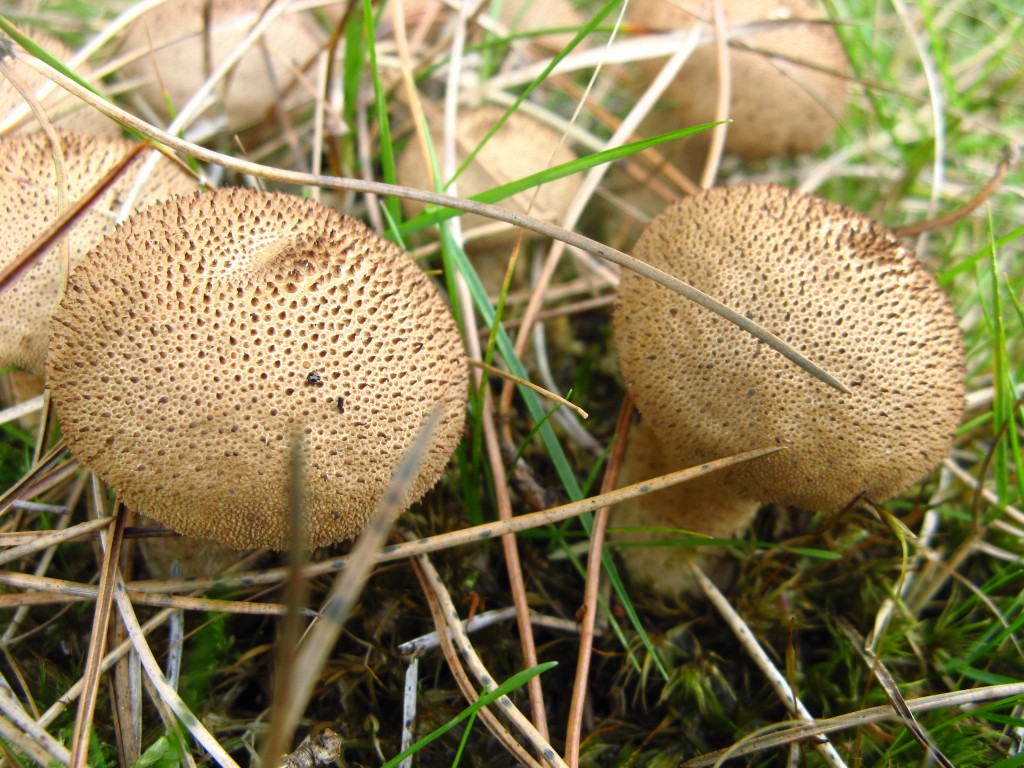
Stump puffball (lycoperdon pyriforme). Grows in large clusters on treestumps. Finer warts, browner and more pear-shaped than common puffball.
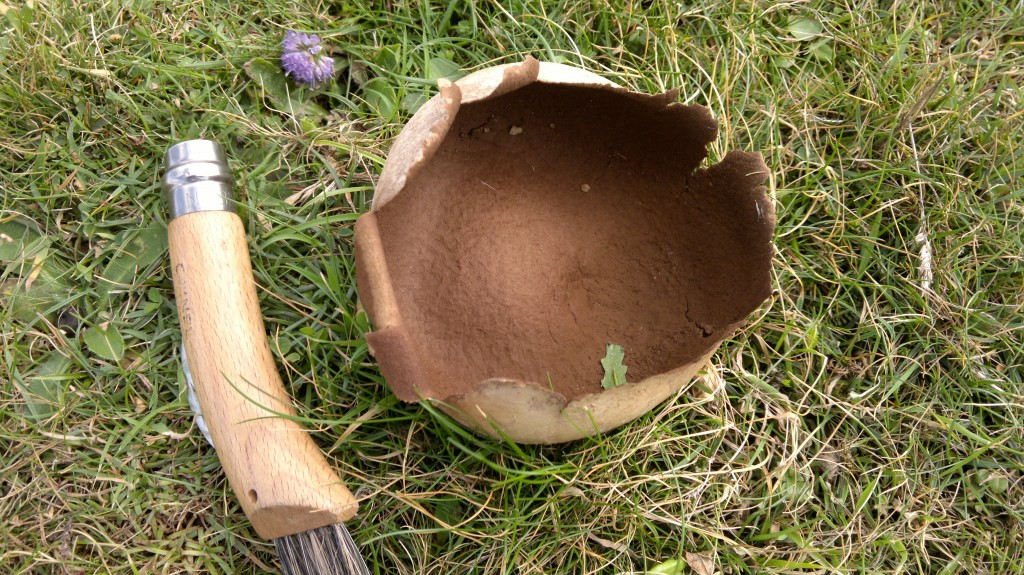
The ‘cup’ remains of a meadow puffball (calvatia utriformis) – which grow larger than common puffballs but not as big as giant puffballs! (up to 12cm).
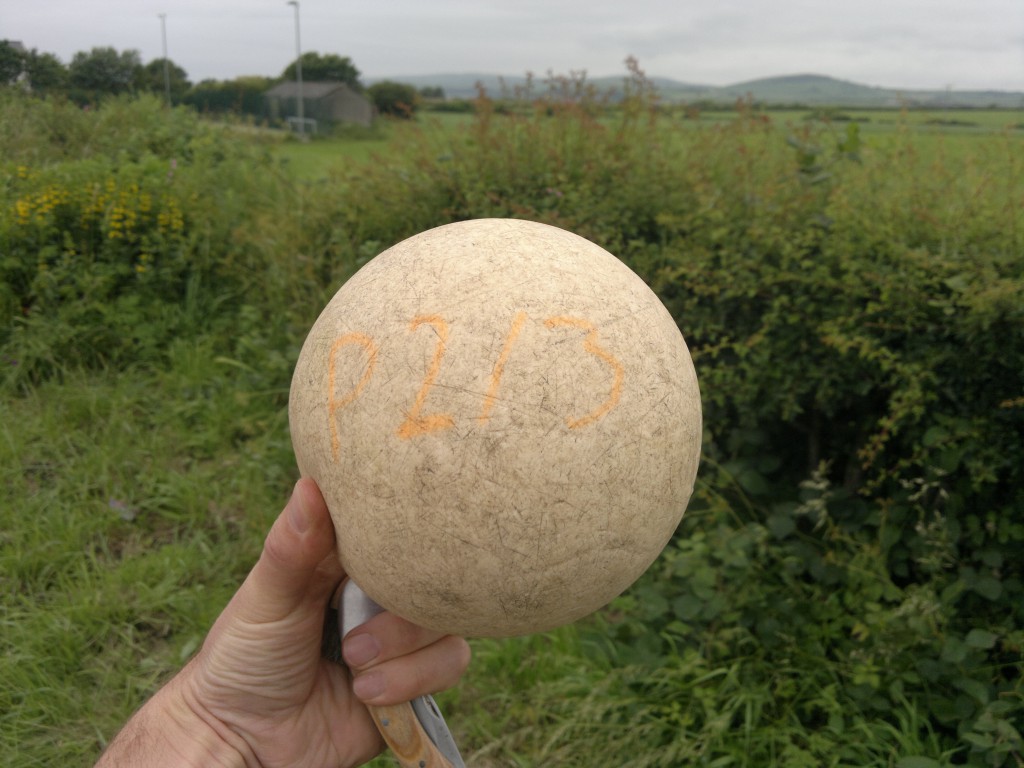
BEWARE! Once you get the puffball hunting bug, you will find yourself regularly diverting for footballs, floats and random pale, vaguely spherical objects in fields and hedgerows.
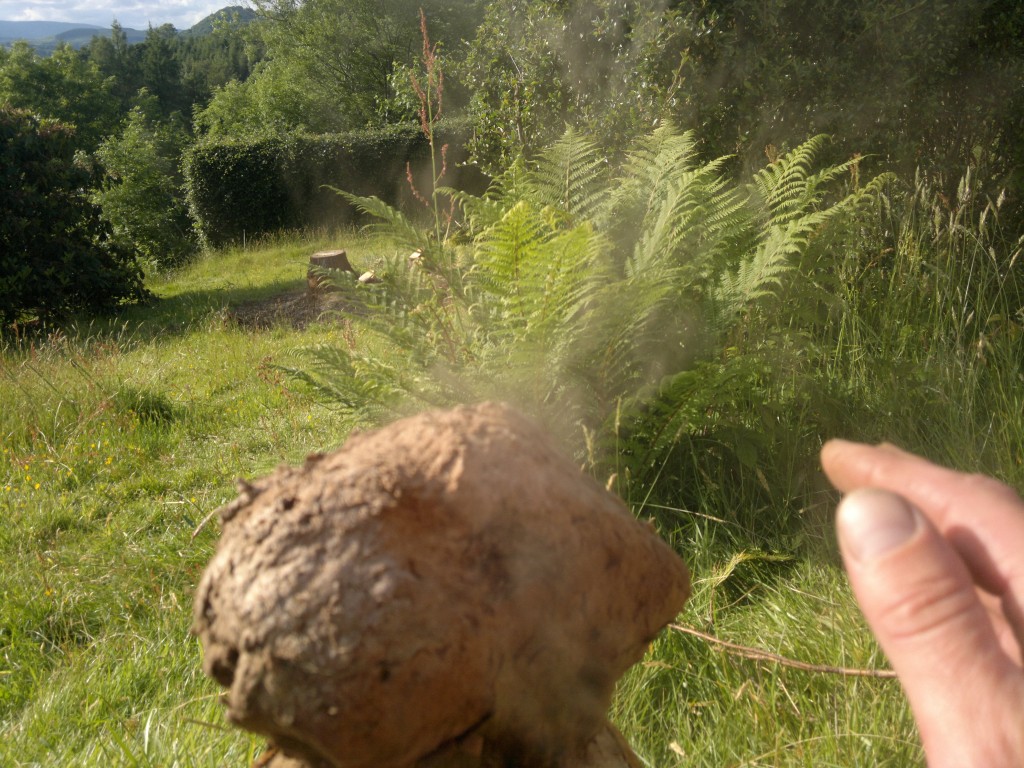
Giant puffballs are remarkably fecund. It is estimated that one can produce 7 TRILLION spores. Not all of these are viable and the vast majority alight on unsuitable terrain, but thats no reason not to kick their spore-smoking husks around your garden in the hope of setting up a nursery!
Related pages:
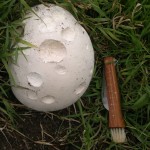


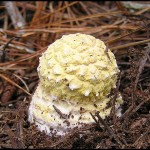
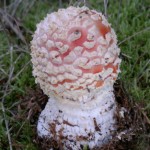
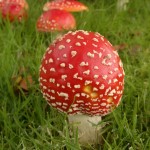
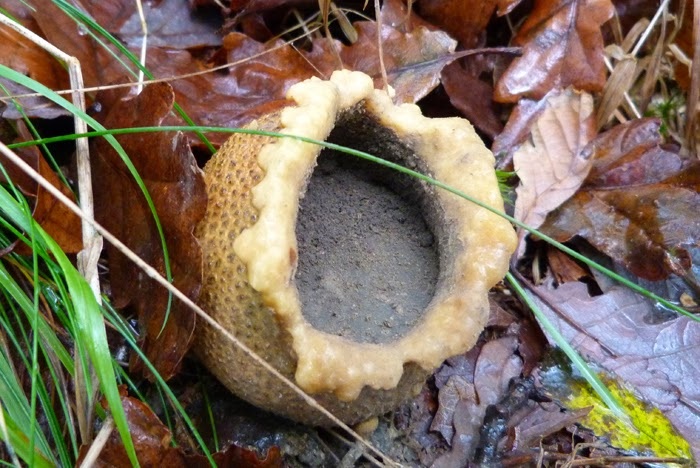
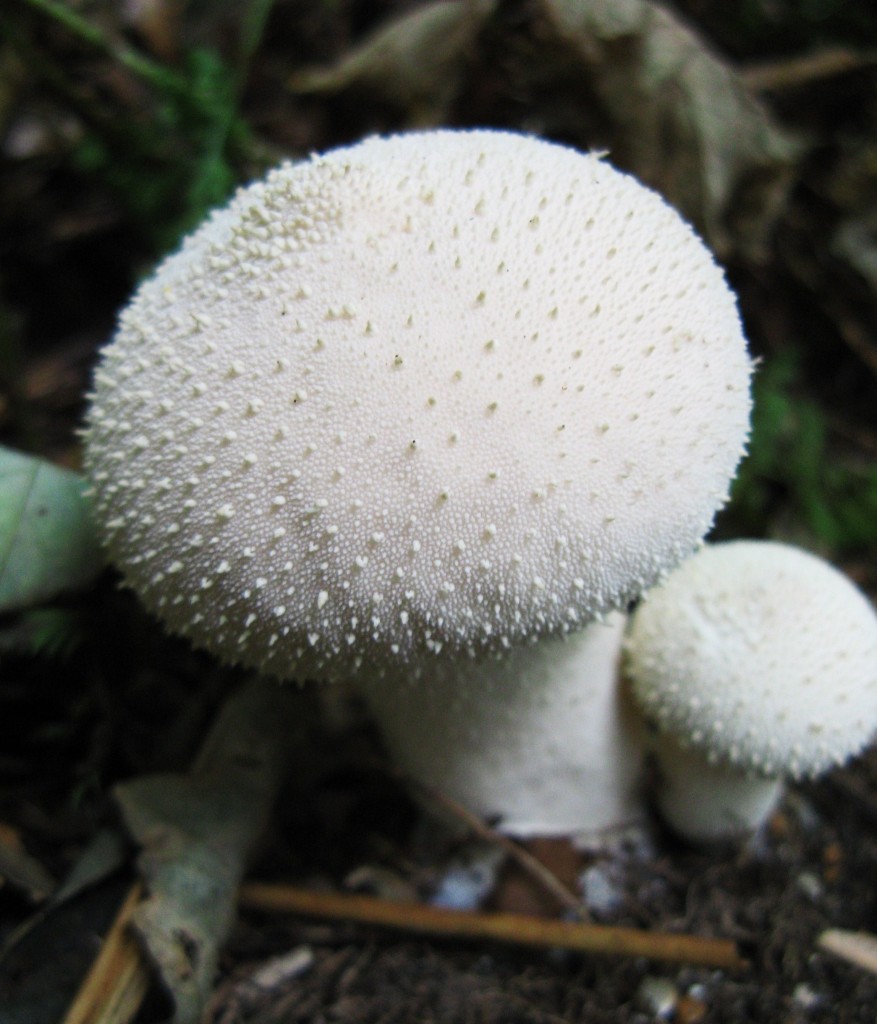
9 Comments
I have some pictures of a softball size puffball that I would like help identifying. How can I post/email a picture?
From near Brady, Texas
Hi Steve, sure, you can post to my Twitter or FB pages.
In my experience, by far the best place to look for giant puffballs is the middle of nettle patches. Painfull, but they obviously like the rich soil under nettles, and no-one else will be foolish enough gpto get them first.
In my experience, by far the best place to look for giant puffballs is the middle of nettle patches. Painfull, but they obviously like the rich soil under nettles, and no-one else will be foolish enough gpto get them first.
That said, nettles—if you gather them with gloves and know how to defuse them—are packed with nutrients and supposed to taste of spring greenness itself:
http://gallowaywildfoods.com/?s=Nettles+
We found three giant puff and I made it to pizza based, it was delicious.
Trooping fennel is delicious as well
Found three near my hedge row in my front yard.. I have found other kinds thru out the property… these were huge in comparison I picked them and identified them in the picture.. I have them peeled sliced and butter and garlic.. reminds me of years ago on grandpa farm..
i live in central indiana and its been fairly cold here do to winter i went out today and found some of what looks like puffballs growing on/at the base of decaying wood. do you know what they might be? brown top with a white bottom and full white in the middle.
Its not possible to identify these from your description. Info here: